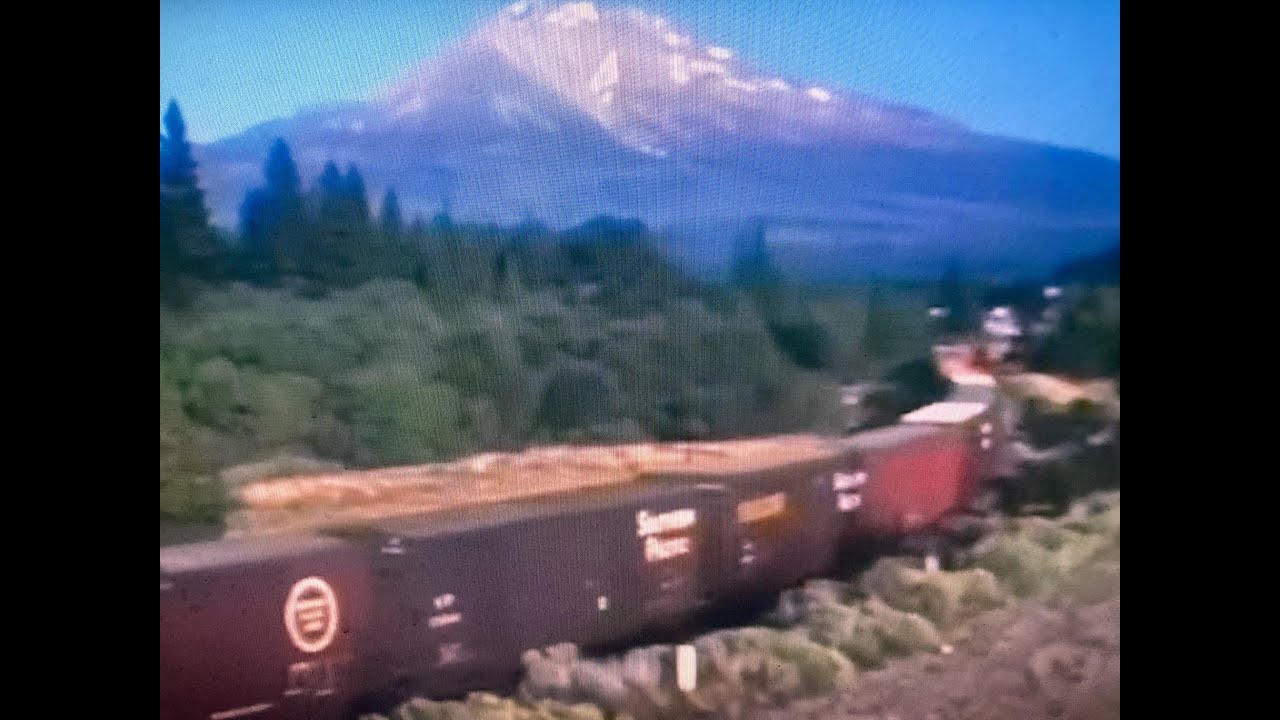Yet another for my Forum friends. I am planning to have a dedicated manifest/unit log train for my layout. (1970s era) Train comes in on one railroad. Cars would interchange to another road via a terminal road. I am also almost thinking a specialized caboose would be needed. My question is this: What, if any, special cars/protections would be needed for such a train? I know when railroads handled poles with drop end gons, any overhanging ones needed idler flats and a boxcar was put at an end when the log didn’t overhang to guard against shifting loads. I’m trying to keep the train as compact as possible.
As usual, any assistance that can be provided would be most appreciated.
As I recall where logging trains crossed over highways, bridges had to have side guards to prevent stray logs from falling on highway traffic.
These cars have log bunks on them to hopefully hold the logs on the cars.
The couple of sites regarding North American log trains that I’ve quickly perused, show ,as I would have expected from local log trains, that the logs are cut so that their length does not exceed the length of the particular car.
I also found it interesting that it would appear that the logs were held in place between the bolster uprights by weight and gravity. Only one photo showed the use of a single chain and twitch.
https://www.rrpicturearchives.net/rslist.aspx?id=WTCX
http://www.trainweb.org/highdesertrails/oce/LogCars.html
Cheers, the Bear. ![]()
Shipment of raw logs in interchange was probably pretty rare, except for pulpwood (itself a processed product). Usually the haul of logs on log bunks was just from the cut site to the mill, and that was typically not a great distance. By the 1970s, most logging hauls to the mill were done by truck, although there were still some operations that used rail for at least part of the haul to the sawmill.
![]()
Someone explain the logistics of a high-speed unit log train. I don’t see it, either as high-speed or dedicated unit consist at scale.
That equipment would be unsuited to actually staging and loading logs ‘near the point of harvest’, nor would there be the same need for wood at high volume in a plant served by the kind of operation characteristic of a unit coal train.
The exception would be for torrefaction for co-firing with pulverized coal, in a world where that approach to ‘clean coal’ didn’t peter out or zero-carbon hadn’t become a watchword. And that’s two types of train: one to take biomass to the torrefaction plant, and something very different to take the pellets to power plants and other points of use…
One thing I do remember seeing in train consists in the 1970s was an occasional block of bulkhead flats carrying pulpwood in a larger manifest. Feels like decades since I’ve seen even a pulpwood load, though.
I believe that you need to define a little better what type of loads you are talking about. “Logs” and “poles” are different things, at least in my mind.
Logs are wooden things that, in many cases, get dumped into the river and are then pulled out at the destination to get cut up. Poles, on the other hand, mean to me a log that has been “machined” into a finished product. I think these are what is seen loaded into gons, with idler cars if necessary, or other specialized railroad flatcars.
Now, on the other hand, maybe you would be better off considering the railroad transportation of pulpwood. Take a look at the videos of this guy:
https://www.youtube.com/results?search_query=jason+asselin+youtube
He has a lot of train runbys with varied pupwood cars.
@maxman
I’m talking about actual logs. I was using the poles as a reference as that’s the only similar item I know how they were handled.
I already have the pulpwood handled.
I suppose that raw logs are transported by rail. But I don’t know if I’ve ever seen a mainline train with them. Maybe out in the woods?
At one time, you might see a mainline train with logs. Here in Minnesota, the sawmills were often a long ways away from where the trees were being harvested. Loaded log cars would go by rail from the northern forests to Duluth / Superior or nearby Cloquet MN, or even all the way down to the Twin Cities - so like 200 miles.
But that was 100 years ago. Logs I’m sure can still go by mainline rail, but mostly pulpwood or basically telephone poles. In any case, I don’t think there’d be enough to warrant a scheduled manifest train; just a regular freight train would do.
The veneer used for plywood is made from logs slightly over 4’ long, with a knife that peels off a sheet of veneer in a matter of a few seconds. What’s left over is essential a 4’ rod. I got to see a veneer cutting machine in action - quite impressive.
I’m uncertain as to the region that FRRYKid models, but I do see that in the 1970s, US log exports grew, primarily to Canada, West Germany/Europe, and Asia, in that order.
The logs had to either get across the border, or to a port, and for me, a log train seems logical.
While the whole video is worth a look, the first minute 48 is applicable to the OP.
My 1 cents worth, Cheers, the Bear. ![]()
I don’t intend it as a scheduled manifest train. I’m only using the word manifest as another word for a “unit” train.

